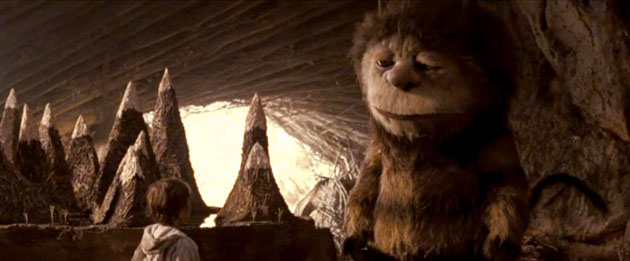K.K. Barrett

The first thing I did was a commercial with him for Coke. He wanted me to try all different animation styles. Computer animation, pixelation, puppetry. But he was doing something else at the same time so he just said, Figure this out. And we did a couple of other commercials after that. And he started picking up really fast. This is when he was with the Satellite Films division of Propaganda. I was doing other commercials for Stéphane Sednaoui and Simon West. So it was a good place to be in the halls of.
AS: Then you did some work with Michel Gondry- was that a connection through Spike Jonze?
KK: It was. He was there too. It was a very incestuous time. In fact I’ve had a very incestuous career. Hanging out with Spike I met Michel. Michel had done a little short, a black and white film where a boy becomes a camera. And Sophia [Coppola] had done a short film called Lick the Star. Another black and white film. And we were watching them all on one night. I knew Sophia because she was with Spike, and Michel was there so I met him too. After that I did some music videos and some commercials with him. And then when his first film came along I did his first film.
AS: Human Nature?
KK: Yes. Also Charlie [Kaufman] wrote it. I met him through Spike. On Being John Malkovich. Coming to the set and hanging out.
AS: Michel Gondry and Spike Jonze come across as very visual. How involved are they with the design?
KK: They are visual to different degrees. Michel is extremely visual. He could tell everything with visuals alone. When we did Human Nature, which was very low budget for the seventy or so sets we had, he storyboarded every set to within an inch. In his cartoon style. He’d say we only need from here to here. So we had a stage with sets lined up, fifteen feet wide, ten feet wide, twelve feet wide. We’d just go to the next, to the next, to the next, and then tear those down and build the next setups. They were very, very tight. It’s a very funny film.
Spike is visual in a bigger picture kind of way. In an emotional way. What kind of emotional impact does this space, this environment have on you? How do I feel in this space? And Michel is less emotionally attached to the visuals except through joy. For both of them in different ways, it’s like going into your house and opening your closet. Or your medicine cabinet or refrigerator. Your desk. Say you open your closet and everything falls down. Because they say if you look at someone’s closet that’s how their mind works. Cluttered or uncluttered; organized or unorganized.
Michel likes to see how things were thought out. The process of how something was made. He’s very observant. Production designers have to observe the world. They have to know how it went together. See what went into it. How did this building survive the building next to it? How has it changed? Why is it still here? What happened? Why did they put that door in there? All of these different details that make up the history of the place. And Michel’s very interested in that and then he kind of takes it apart. What if it happened like this?
AS: You were saying that in Being John Malkovich the drop ceiling was designed to look like it had been added in the Eighties, but the rest of the building had more history.
KK: You can’t do a historical piece and only start at the year it’s taking place. You have to know where it came from. How did it end up there?
Pingback: Grant Major